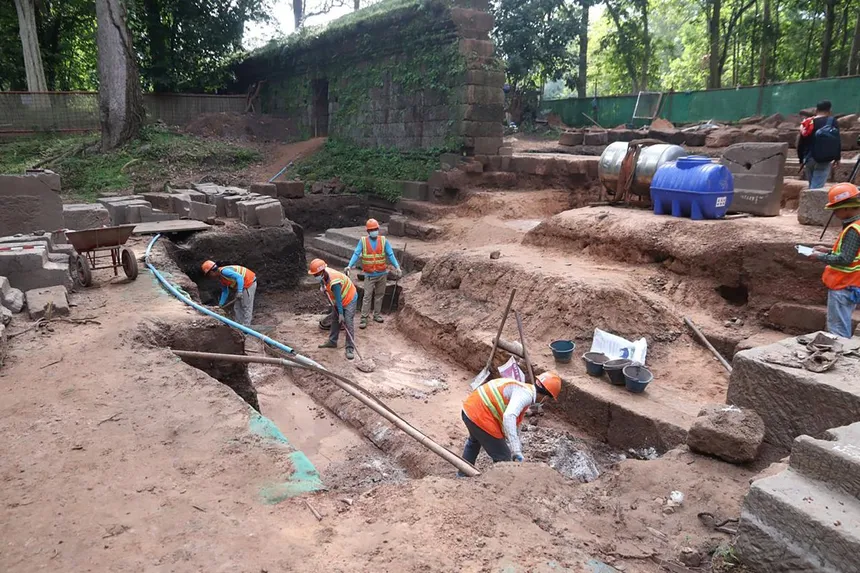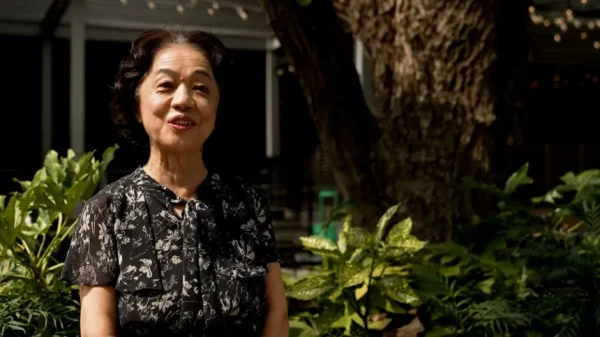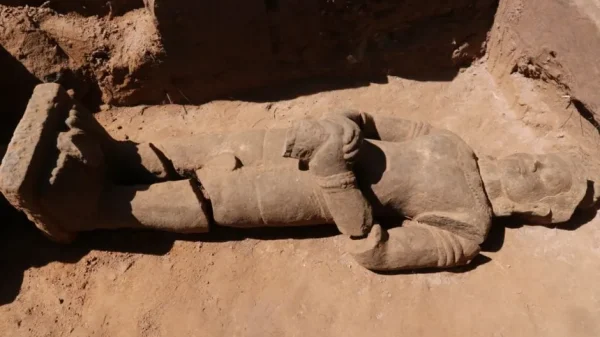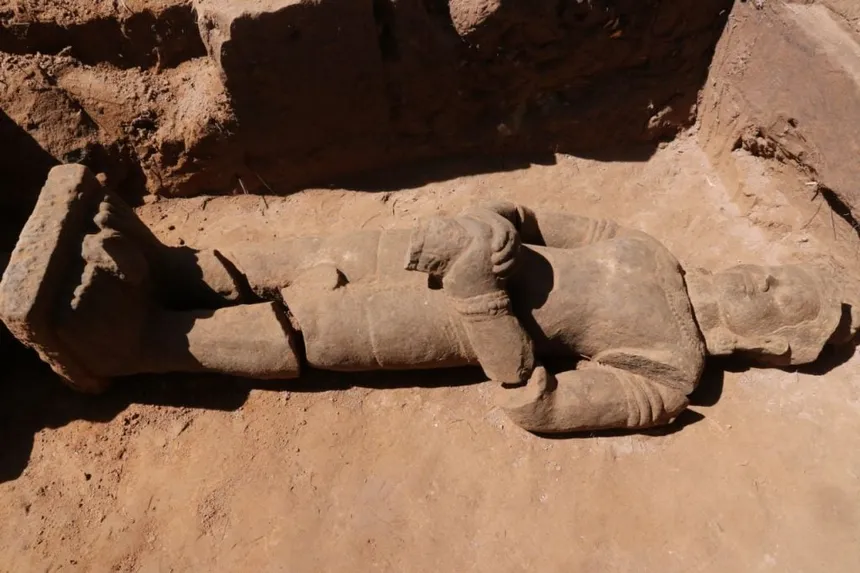Archaeologists in Cambodia have made a remarkable discovery at the Angkor World Heritage Site near the city of Siem Reap, uncovering a dozen centuries-old sandstone statues. The statues, which depict door guardians, were found near the north gate leading to the 11th-century Royal Palace at Angkor Thom, the last capital of the Khmer Empire. According to Long Kosal, spokesman for the Apsara National Authority, the statues were buried at depths of up to 4.5 feet and some are in surprisingly good shape, given their age.
The statues vary in size from about 39 to 43 inches and each features unique facial hair ornaments, making them incredibly distinctive. Archaeologists believe that these door guardian statues exemplify the Khneang Style, which aligns with the construction period of the 11th-century palace. Angkor Thom is part of the Angkor Archaeological Park, a complex that sprawls over some 155 square miles and includes the ruins of Khmer Empire capitals from the ninth to 15th centuries, including the temple of Angkor Wat.
The Angkor site, which is one of south-east Asia’s most popular tourist destinations, drew more than 500,000 international visitors in the first half of 2024. The site has been the subject of an archaeological dig, a collaborative project between Apsara and the China-Cambodia Government Team for Safeguarding Angkor. After the discovery of the statues, the archaeological team carefully documented their positions before removing them for cleaning and restoration. They will eventually be returned to their original locations.

Centuries-Old Guardian Statues Unearthed at Angkor Thom (Image via Getty)
The discovery is particularly significant given that many Khmer cultural treasures were looted during the long period of civil war and instability when Cambodia was ruled by the brutal communist Khmer Rouge regime in the 1970s. However, in recent decades, there has been a trend towards the repatriation of art and archaeological treasures taken from their homelands. In August, Cambodia celebrated the return of dozens of artefacts from museums and private collections abroad.
Despite the significance of this discovery, Cambodia has faced criticism for its efforts to clean up the Angkor site, which has involved relocating thousands of families. Amnesty International has condemned this move as a “gross violation of international human rights law”. At its meeting in July, the UN’s World Heritage Committee recommended that Cambodia invite a new team of experts to monitor the situation.


























